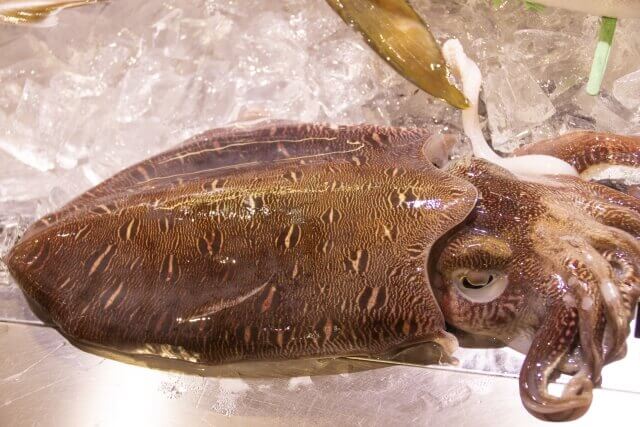 No people in the world love squid more than the Japanese. Squid ranks third in import volume behind shrimp and tuna. Squid is brought to Japan from the oceans all over the world. There are between 400 and 500 species of wild squid on Earth. Some, like the pygmy cuttlefish, are tinier than 3 millimeters while the giant squid is over 10 meters.
No people in the world love squid more than the Japanese. Squid ranks third in import volume behind shrimp and tuna. Squid is brought to Japan from the oceans all over the world. There are between 400 and 500 species of wild squid on Earth. Some, like the pygmy cuttlefish, are tinier than 3 millimeters while the giant squid is over 10 meters.
There are about 100 species of squid that live in the waters surrounding Japan. Surume ika (Japanese common squid) makes up the highest volume of domestic-caught squid. It is used as a Yari ika or Surume ika topping in eastern Japan, but Surume ika isn’t used very often in western Japan. At sushi restaurants, squid like Sumi ika (Golden cuttlefish), Aori ika (Bigfin reef squid), Kensaki ika (Swordtip squid) and Mongou ika (Ocellated cuttlefish) go for high prices, but they are all caught in smaller quantities and therefore only available to high-end sushi restaurants that can procure them fresh.
There are some conveyor belt sushi restaurants that list Mongou ika (モンゴウイカ又はカミナリイカ) on the menu, but actually serve European common cuttlefish. It is produced in the waters off the coast of West Africa. Even some sushi restaurants do this. This is actually still too pricey for conveyor belt sushi though. What is generally used at conveyor belt sushi is Flying squid, which goes for only 1/10 the price of the European common cuttlefish and reaches 60 cm in length. Jumbo flying squid is also often used. The Jumbo flying squid is more than twice as long as the Flying squid and exceeds 1 meter in length. The Jumbo flying squid is mainly imported from places on the other side of the world such as Chile and Mexico. The thickness of the meat is similar to Mongou ika. However, a big drawback is that the Jumbo flying squid lacks the sweetness peculiar to squid. Therefore, it is soaked in water that has been artificially sweetened. This alters the dried out sensation to a plump, moist sensation, making the customer believe it is Mongou ika.
The squid must have a certain thickness in order to masquerade as Mongou ika. Rhomboid squid, which has a torso length of 80 cm is also disguised as Mongou ika. Rhomboid squid is found in the warm waters of the world and is even caught in relatively high volume in Japan. Large squid have a low price cost, so it’s good for the shops to make a profit. Furthermore, the sweetness is brought out more when frozen first than by serving it fresh. That means it can be used as Mongou ika without any need for the artificial sweeteners used in Flying squid and Jumbo flying squid.
The fact is that there are many substitute products for Mongou ika. But even so, it doesn’t change the fact that using ingredients disguised as others is an unacceptable practice.
Types of substitutes for the Mongou ika
European common cuttlefish: Sepia officinalis (Linnaeus, 1758)
European common cuttlefish (ヨーロッパコウイカ) is found from the Atlantic coast of France to the Mediterranean and west coast of Africa. It is often caught in the waters around Morocco. Its body length is around 30 cm. When it first arrived on the Japanese market, it was called Mongouika, hence the name.
The scientific name sepia means black pigment and officinalis means medicinal, indicating that this is a material for Chinese herbal medicine. At processing plants in Thailand and China, the fish is made into fillets for sashimi, and then vacuum-packed and sent to Japan.
Flying squid: Ommastrephes bartramii (Lesueur, 1821)
Flying squid (アカイカ) is distributed in the North Pacific, South Pacific, and Atlantic Oceans. Its body length exceeds 40 cm, and it can weigh more than 4 kg. It is similar in appearance to the Surumeika, but has a darker, blackish back. It is used as a substitute for Surumeika for processing such as delicacies.
Jumbo flying squid: Dosidicus gigas (Orbigny, 1835)
Jumbo flying squid (アメリカオオアカイカ) is found only off the Pacific coast of the United States, Chile and Peru in South America. They are over 80 cm in length, weigh around 10 kg, and have as many as 100 to 200 suckers. In Peru, they are called Pota. Japanese fishing vessels used to catch flying squid mainly in the North Pacific, but their catch has drastically decreased due to the ban on drift net fishing.
Japanese vessels have switched to fishing for Jumbo flying squid, a member of the flying squid family, in the waters off Peru and other areas. Fishing for Jumbo flying squid in Peruvian waters continues from spring to fall.
Since the drifting net fishing of flying squid has been banned, it is the most promising resource as a raw material for processing. However, the larger ones store ammonia in their muscles, so de-ammonia treatment is required when processing them.
Rhomboid squid: Thysanoteuthis rhombus Troschel, 1857
Rhomboid squid (ソデイカ) is widely distributed in the warm waters of the Pacific and Atlantic Oceans. The body length is 70 cm. Its fins are diamond-shaped and the same length as its body. Because they do not form large schools and live scattered, they have been a difficult resource to exploit.
After a new fishing method was developed in the Tajima region of Hyogo Prefecture in the 1960s, the fishery began in earnest. Because of its reasonable price, it is often used in restaurants such as conveyor belt sushi restaurants. Also called Diamond squid or Diamondback squid.
[sc_apply url=”https://sushiuniversity.jp/apply/”]
We hope this information will be helpful.

Revision date: March 24, 2023
Share this article
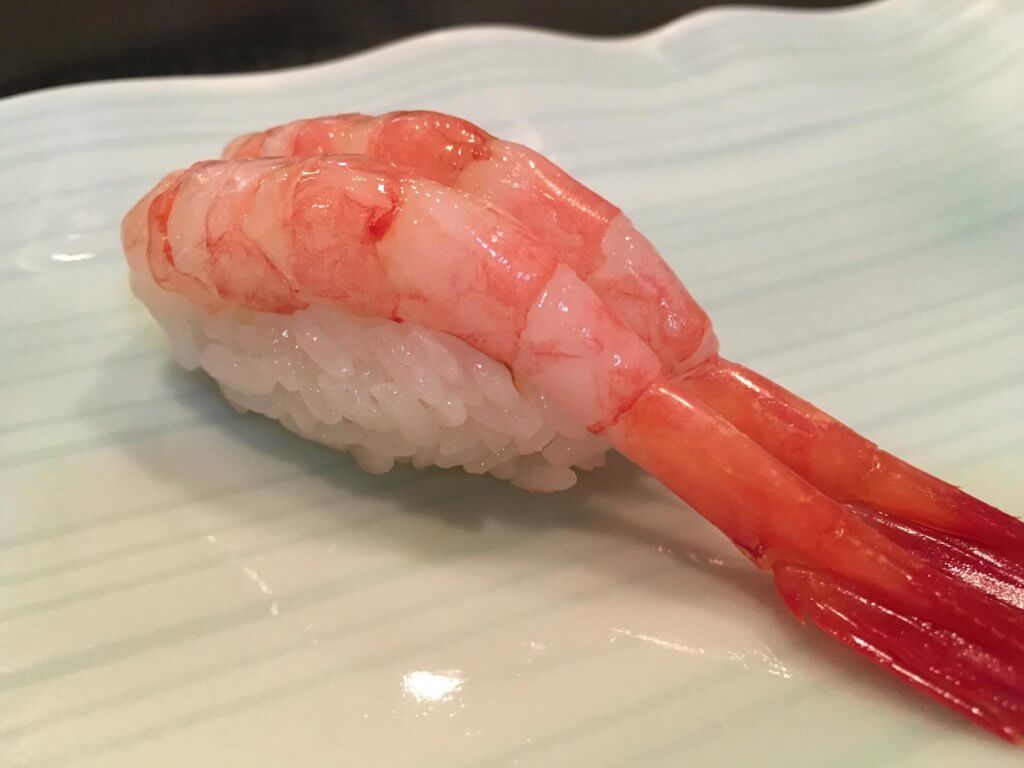 It goes without saying, that each type of fish has its very own scientific name. However, in places like the Toyosu Fish Market, there are seafoods that end up sharing a name.
It goes without saying, that each type of fish has its very own scientific name. However, in places like the Toyosu Fish Market, there are seafoods that end up sharing a name.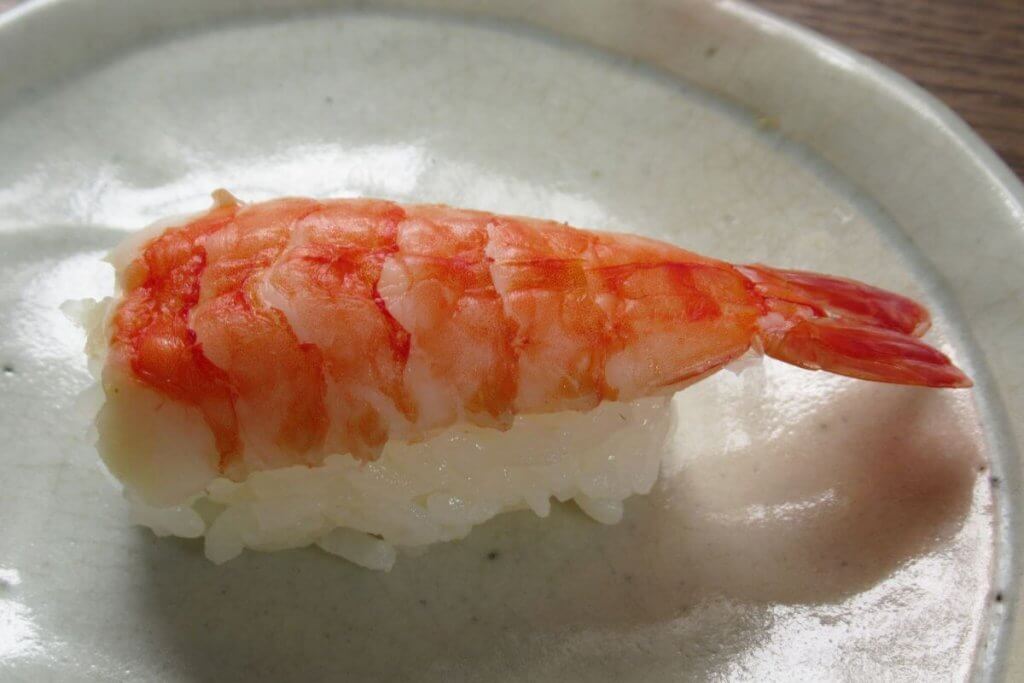 Black Tiger is in the category of the largest shrimp that is part of the Kuruma Ebi family and grows to be up to 30 cm. Black Tiger gets its name from the fact that it looks black before it is heated and has stripes like a tiger. The official name in Japan is “Ushi Ebi” but the reason is unknown. The Black Tiger is cultivated heavily in places like China, Vietnam, Indonesia, Thailand and India. It started to be imported from Taiwan in the 1980s to compensate when Japan’s shrimp consumption could no longer be covered by Kuruma Ebi. At the peak, it accounted for 40% of Japan’s shrimp imports. There is a strong impression of shrimp being imported, but small Black Tiger can actually be caught in Japan from Tokyo Bay southward.
Black Tiger is in the category of the largest shrimp that is part of the Kuruma Ebi family and grows to be up to 30 cm. Black Tiger gets its name from the fact that it looks black before it is heated and has stripes like a tiger. The official name in Japan is “Ushi Ebi” but the reason is unknown. The Black Tiger is cultivated heavily in places like China, Vietnam, Indonesia, Thailand and India. It started to be imported from Taiwan in the 1980s to compensate when Japan’s shrimp consumption could no longer be covered by Kuruma Ebi. At the peak, it accounted for 40% of Japan’s shrimp imports. There is a strong impression of shrimp being imported, but small Black Tiger can actually be caught in Japan from Tokyo Bay southward.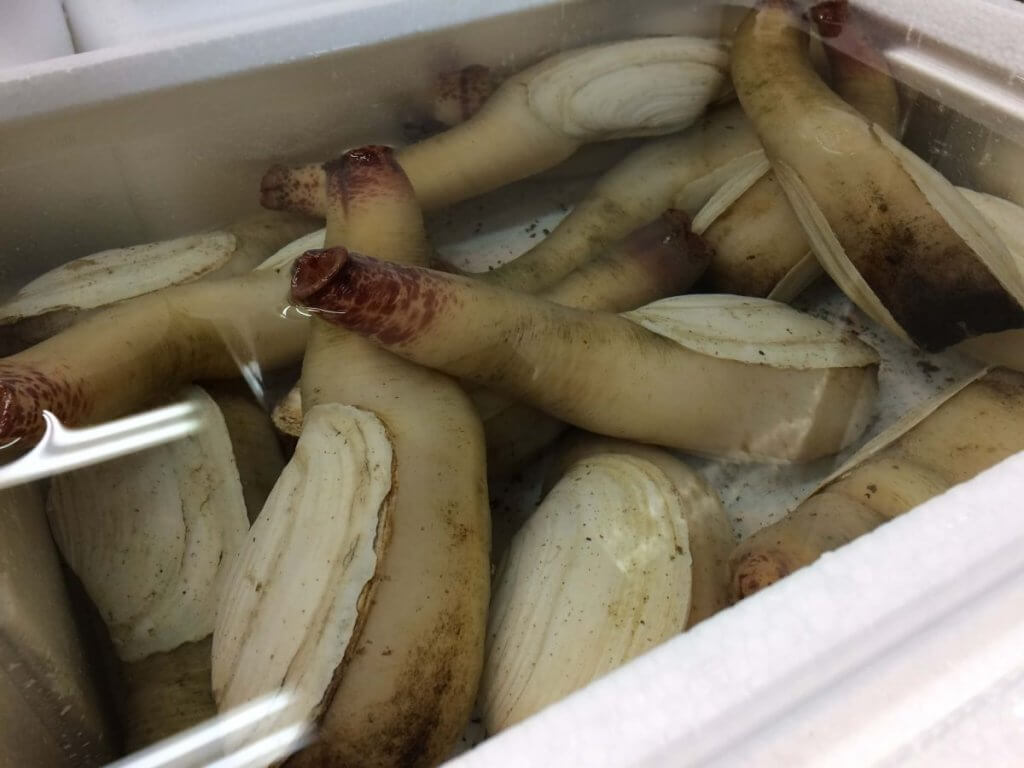 The official name of Mirugai is “Mirukui”. The part of the Mirugai that is used as a sushi topping is the siphon that bulges out from the shell. The siphon is separated from the shell and then this is cut through longways, from top to bottom. One Mirugai can only produce four pieces of sushi. It is also nearly extinct from overfishing. While it can still be caught in the Seto Inland Sea and Mikawa Bay, there are fishing limits, which means it is an ultra-high-priced sushi topping.
The official name of Mirugai is “Mirukui”. The part of the Mirugai that is used as a sushi topping is the siphon that bulges out from the shell. The siphon is separated from the shell and then this is cut through longways, from top to bottom. One Mirugai can only produce four pieces of sushi. It is also nearly extinct from overfishing. While it can still be caught in the Seto Inland Sea and Mikawa Bay, there are fishing limits, which means it is an ultra-high-priced sushi topping.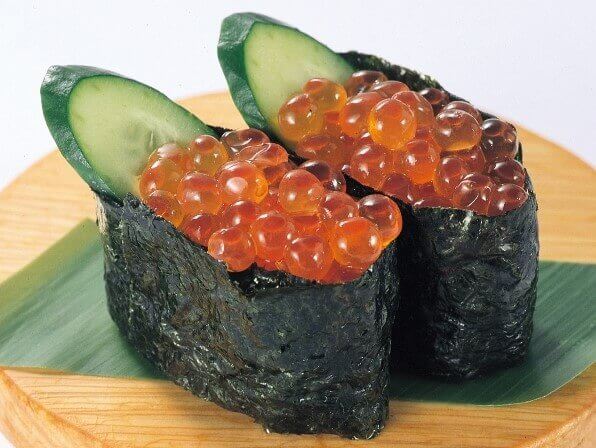 Immature salmon eggs still wrapped in ovarian membrane and salted are called sujiko. Ikura is salmon roe in which each mature egg is separated from the ovarian membrane before laying the eggs and then salted or marinated in soy sauce. The ikura of Chum salmon going upstream in the Kushiro River and Tokachi River in Hokkaido From October to December are considered to be premium ikura.
Immature salmon eggs still wrapped in ovarian membrane and salted are called sujiko. Ikura is salmon roe in which each mature egg is separated from the ovarian membrane before laying the eggs and then salted or marinated in soy sauce. The ikura of Chum salmon going upstream in the Kushiro River and Tokachi River in Hokkaido From October to December are considered to be premium ikura.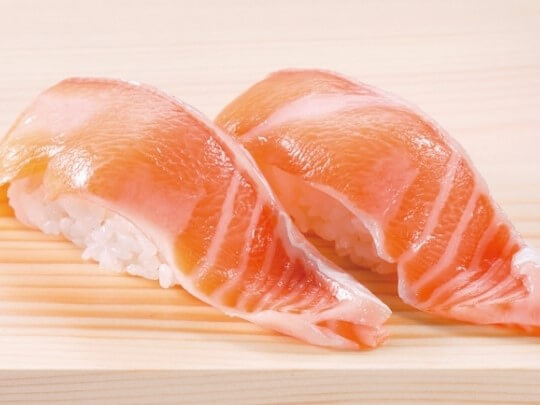 You probably already know this, but “toro tuna” is not the name of a type of fish. “Toro” is the name of a fatty part of the tuna. The fat content and attributes of the belly side of the tuna are completely different from that of the dorsal side. Toro is the name of the part near the head, mostly on the belly side.
You probably already know this, but “toro tuna” is not the name of a type of fish. “Toro” is the name of a fatty part of the tuna. The fat content and attributes of the belly side of the tuna are completely different from that of the dorsal side. Toro is the name of the part near the head, mostly on the belly side.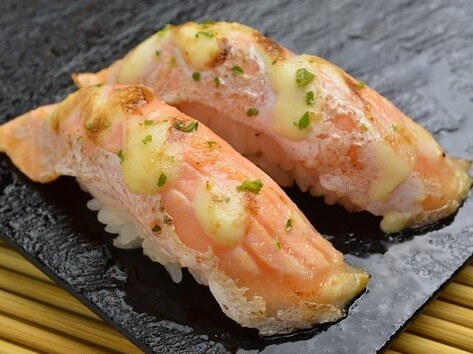 The Donaldson trout is farmed throughout Japan and is used as toro salmon and aburi salmon at conveyor belt sushi restaurants. Since they are supplied directly to the processor (of the salmon) from the farmer without going through the market, they may be sold cheaper than the import price. Just like the imported salmon, this farmed salmon is also fed artificial coloring. There are also already new variants improved from the Donaldson trout being bred. Trout made from breeding Donaldson trout females and steelhead males are called Donaldson steelhead, for instance. They grow even faster.
The Donaldson trout is farmed throughout Japan and is used as toro salmon and aburi salmon at conveyor belt sushi restaurants. Since they are supplied directly to the processor (of the salmon) from the farmer without going through the market, they may be sold cheaper than the import price. Just like the imported salmon, this farmed salmon is also fed artificial coloring. There are also already new variants improved from the Donaldson trout being bred. Trout made from breeding Donaldson trout females and steelhead males are called Donaldson steelhead, for instance. They grow even faster.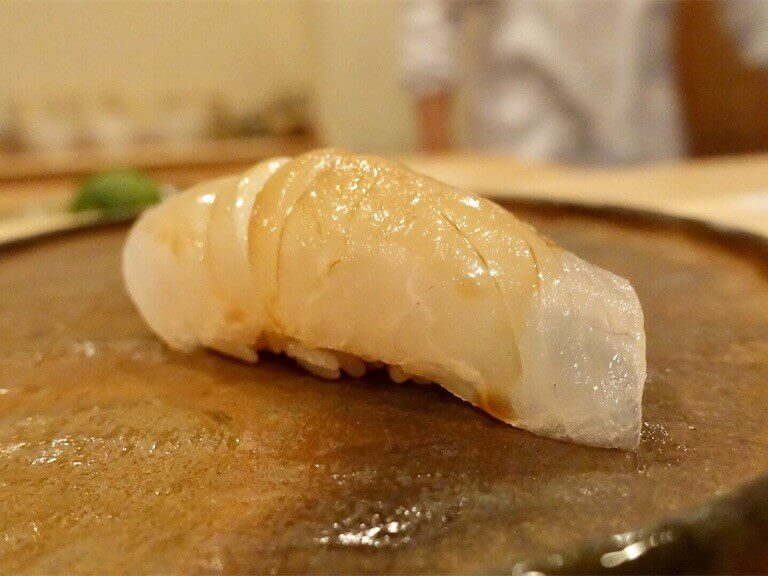 When you see “tai” on the menu at a conveyor belt sushi restaurant, it’s very likely that is not “madai” (
When you see “tai” on the menu at a conveyor belt sushi restaurant, it’s very likely that is not “madai” (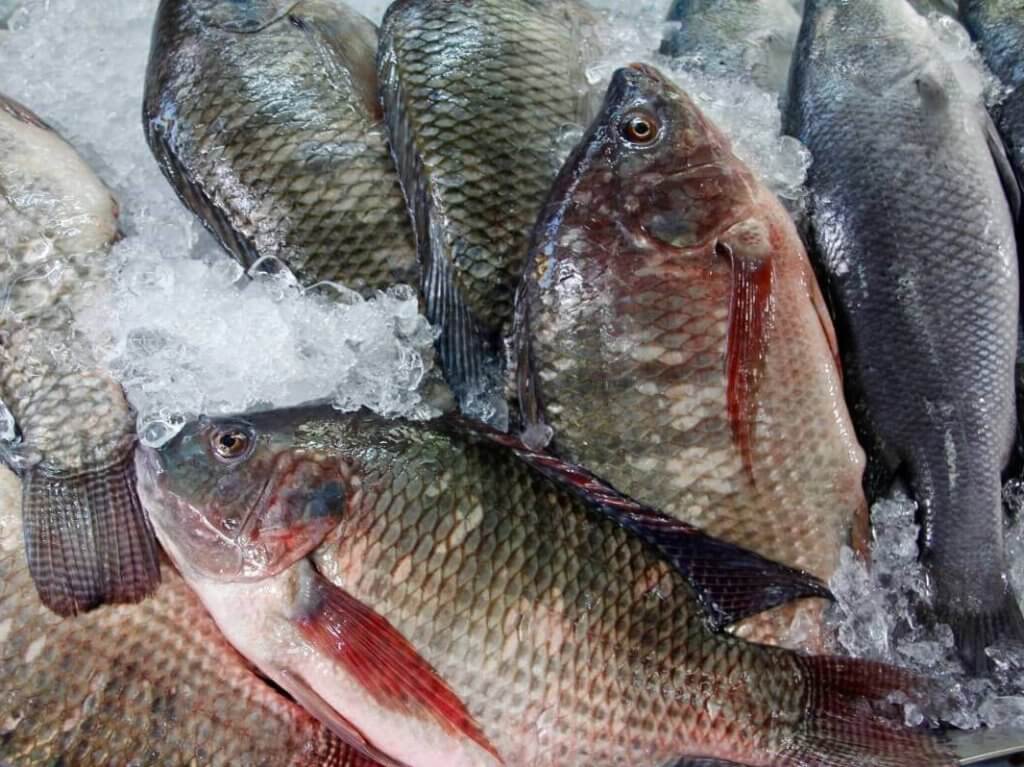 First on the list is Nile tilapia. This fish was introduced from Egypt to rivers throughout the world as food in 1962. While it was farmed in large quantities in Japan, especially in Kagoshima, from the 1990s, production rapidly declined with the stagnant prices of farmed madai. However, they are extremely fertile and proliferate naturally, and started living in the thermal regions and the rivers where warm wastewater flow throughout Japan.
First on the list is Nile tilapia. This fish was introduced from Egypt to rivers throughout the world as food in 1962. While it was farmed in large quantities in Japan, especially in Kagoshima, from the 1990s, production rapidly declined with the stagnant prices of farmed madai. However, they are extremely fertile and proliferate naturally, and started living in the thermal regions and the rivers where warm wastewater flow throughout Japan.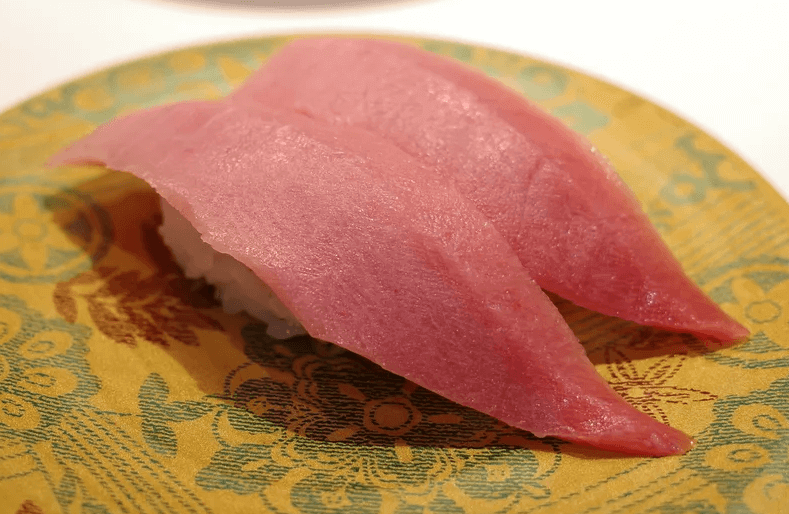 There is only one trick to distinguishing between conveyor belt sushi restaurants (kaiten-zushi), and that is to try eating the tuna as your first dish.
There is only one trick to distinguishing between conveyor belt sushi restaurants (kaiten-zushi), and that is to try eating the tuna as your first dish.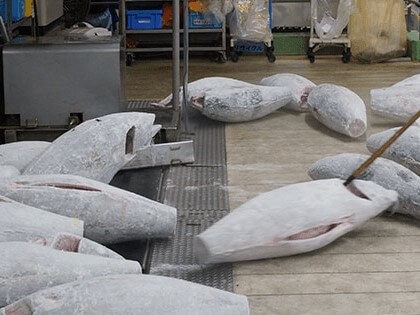 The most commonly used ingredient at kaiten-zushi is tuna. At kaiten-zushi, the tuna is imported and frozen nearly 100% of the time. The most famous is the Southern blue-fin tun, but you’ll also find Boston bluefin tuna, Canadian tuna farmed in fish preserves, inland sea tuna from Turkey and Spain, New Zealand offshore tuna, Atlantic tuna, etc. Also, the season of each type of tuna and the timing of high-volume catch differ, which makes the prices fluctuate greatly.
The most commonly used ingredient at kaiten-zushi is tuna. At kaiten-zushi, the tuna is imported and frozen nearly 100% of the time. The most famous is the Southern blue-fin tun, but you’ll also find Boston bluefin tuna, Canadian tuna farmed in fish preserves, inland sea tuna from Turkey and Spain, New Zealand offshore tuna, Atlantic tuna, etc. Also, the season of each type of tuna and the timing of high-volume catch differ, which makes the prices fluctuate greatly.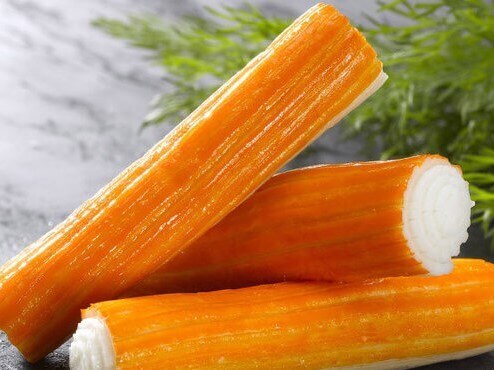 It seems kanikama was invented in Japan. In the early 1970s, Sugiyo, a fish paste manufacturer, in a failed attempt to developed artificial jellyfish, ended up with a product that had a texture exactly like crab and shifted development to that instead.
It seems kanikama was invented in Japan. In the early 1970s, Sugiyo, a fish paste manufacturer, in a failed attempt to developed artificial jellyfish, ended up with a product that had a texture exactly like crab and shifted development to that instead.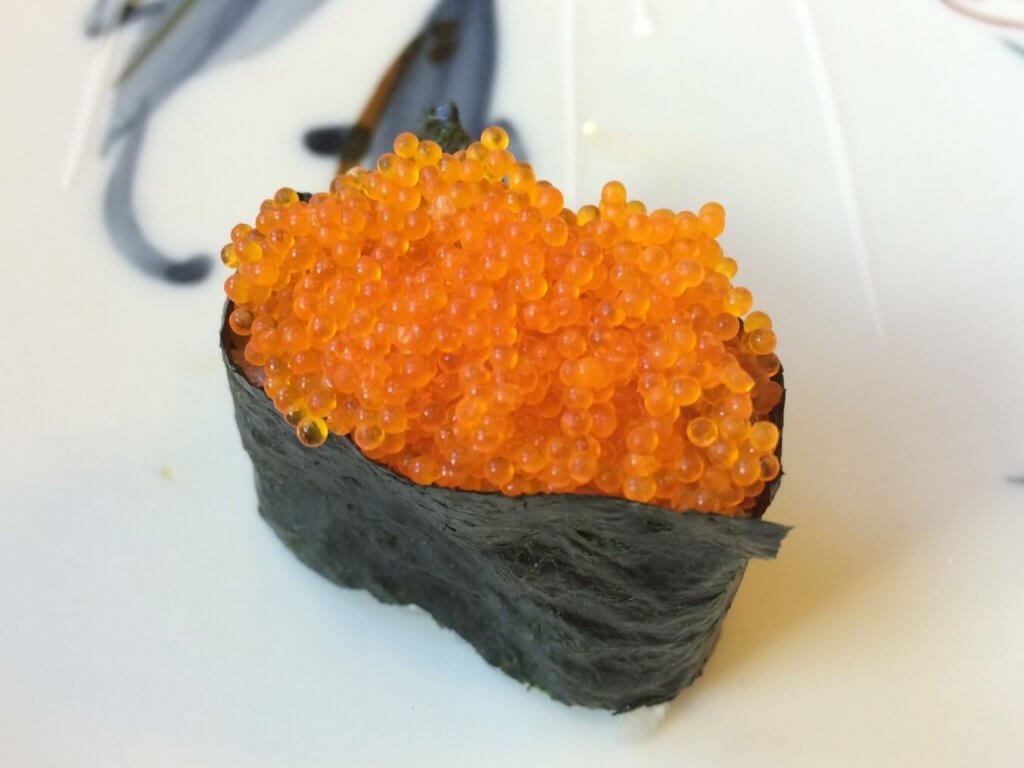 The tiny red balls around the outside of the rice on California rolls are Tobiko (飛び子). Specifically, they have salted roe of flying fish and are known for the plump, crunchy texture. This crunchy texture comes from the skin, which is relatively tough, even compared to other fish eggs. As the roe is made up of small eggs of only 1 to 2 mm, each one bursts as you bite, without leaving the outer skin in your mouth, so you can enjoy a nice texture that you won’t find with any other fish roe. Unlike the orange-colored tobiko sold in stores, natural tobiko has a pale golden color with a sense of transparency. Therefore, some processors have dubbed it “golden caviar”.
The tiny red balls around the outside of the rice on California rolls are Tobiko (飛び子). Specifically, they have salted roe of flying fish and are known for the plump, crunchy texture. This crunchy texture comes from the skin, which is relatively tough, even compared to other fish eggs. As the roe is made up of small eggs of only 1 to 2 mm, each one bursts as you bite, without leaving the outer skin in your mouth, so you can enjoy a nice texture that you won’t find with any other fish roe. Unlike the orange-colored tobiko sold in stores, natural tobiko has a pale golden color with a sense of transparency. Therefore, some processors have dubbed it “golden caviar”.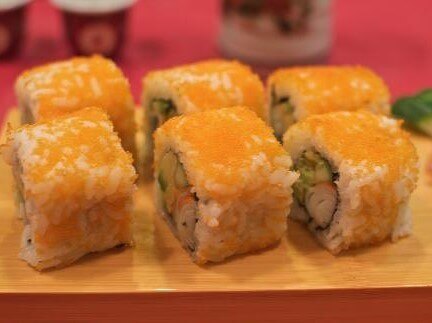 On the other hand, an orange-colored tobiko is often seen at conveyor belt sushi restaurants, etc., but this is the roe of a fish called capelin (カペリン), which is similar to shishamo smelt. A salted version of this is used for sushi rolls in the US and other places, where it is called masago. Compared to tobiko, the grains are smaller and the texture is a bit chewier. It is mainly rich in EPA (Omega-3 fatty acids) and collagen.
On the other hand, an orange-colored tobiko is often seen at conveyor belt sushi restaurants, etc., but this is the roe of a fish called capelin (カペリン), which is similar to shishamo smelt. A salted version of this is used for sushi rolls in the US and other places, where it is called masago. Compared to tobiko, the grains are smaller and the texture is a bit chewier. It is mainly rich in EPA (Omega-3 fatty acids) and collagen.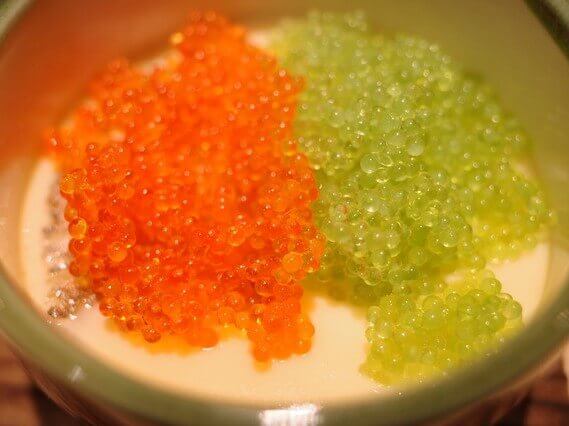 Finally, we’ll let you in on a not-so-pleasant secret. Flying fish and capelin roe is actually a light yellow or beige color. However, you’ll find it in bright red, orange, yellow and lately even green or black. Of course, these are colored by either natural pigments or synthetic coloring. Furthermore, tobiko is sometimes mixed with the cheaper capelin or herring roe. Unfortunately, food fraud is common in seafood products that are consumed in high quantities.
Finally, we’ll let you in on a not-so-pleasant secret. Flying fish and capelin roe is actually a light yellow or beige color. However, you’ll find it in bright red, orange, yellow and lately even green or black. Of course, these are colored by either natural pigments or synthetic coloring. Furthermore, tobiko is sometimes mixed with the cheaper capelin or herring roe. Unfortunately, food fraud is common in seafood products that are consumed in high quantities.